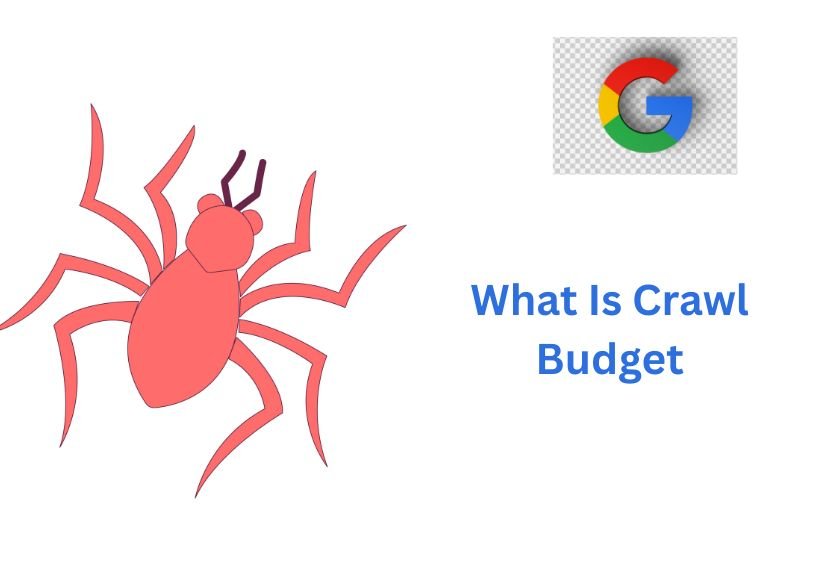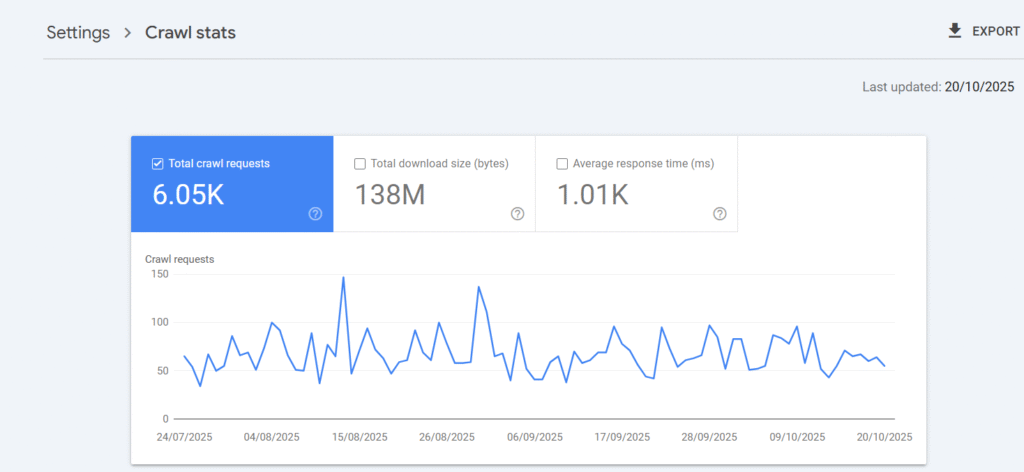What Is Crawl Budget and Why Does It Matter in SEO

If any of your website pages take a long time to show up on Google, crawl budget could be the issue. Crawl budget is an important SEO factor that determines how often Google crawls your site and the number of pages it will crawl. By understanding the crawl budget, you can better ensure Google spends its time on the most important pages.
Table of Contents
What Is Crawl Budget?
Crawl budget describes the quantity of pages that Googlebot can and wants to crawl your site within a specific time frame. Think of it like a limit for a day; when that limit is reached, Googlebot can move on to other sites.
If Google is using your crawl budget on duplicated pages, filters, or thin content, they may not crawl or index your most important pages quickly. Being aware of this crawl budget means you can assist Google in finding and ranking your best content as soon as possible.
Crawl Rate vs. Crawl Demand
Your crawl budget is primarily determined by two signals:
Crawl Rate Limit
Indicates the maximum speed at which Googlebot can crawl your site without compromising the performance of your website. If your server encounters slowness or returns errors, Googlebot will slow down its crawl.
Crawl Demand
Indicates how much Google wants to crawl the pages on your website. If specific pages are consistently being updated and/or are popular, they will be crawled more often.
Both of these signals combined will determine your crawl budget limit. You can improve since signals are related to both your site speed and having updated content.
Crawl Budget vs. Crawl Efficiency
This is where most website owners get confused.
- Crawl budget is the number of pages that Google can crawl.
- Crawl efficiency is how efficiently that number is spent.
You could have a very high crawl budget, but if Googlebot is spending most of that budget crawling low-quality pages or pages that are repeated, then you have a very low crawl efficiency. The goal is not just to get a higher crawl budget – it is getting it spent wisely on high-quality pages that have real value.
Why Crawl Budget Matters for SEO
Crawl budget SEO is really important to how quickly new pages, or pages that have changed, can be picked up in the search results. Large sites, such as eCommerce or news sites, usually have more crawl issues because they have to keep track of so many different pages. If the crawl budget is used on old URLs, then it slows down getting new stuff indexed.
But if you have a smaller site, it’s still helpful to keep it clean for Google to focus on the most valuable pages for users.
Real Example
If your website has 5,000 pages and Googlebot crawls 2,000 in a day, but half of those pages are filter or tag pages, you’ll only have your valuable content receive attention from Googlebot on those 2,000 pages. By eliminating low-value filtering or tag URLs and improving your internal links, you make it easier for Googlebot to crawl your website.
How to Check Crawl Budget
The crawl activity can be reviewed at Google Search Console → Settings → Crawl stats report.
The report shows:
- Crawl requests
- Sections crawled the most
- Crawl errors
- Average response time
The average response time reveals how fast your server replies to Googlebot. If your average response time is less than 300 ms, your site is healthy. Above 700 ms, it may begin to slow down. You can improve crawl rate through hosting, caching, and image compression.

Crawl Budget and JavaScript
If your website relies heavily on JavaScript, Google needs more time to load and render each page. That extra processing reduces crawl capacity.
To fix this, use server-side rendering (SSR) or pre-rendering to make content visible faster. It helps Google crawl and index JavaScript pages more efficiently.
Server Log File Analysis
Reviewing your server log files gives you actual insight into how Googlebot is crawling and interacting with your site.
You can see:
- Which pages does Google crawl the most
- How often are they re-crawled
- Which pages are ignored
Finding this data allows you to find crawl waste in order to fix any internal link issues or sitemap crawling problems. Very few site owners utilize this method, but it is one of the best ways to optimize crawl for your site.
How to Improve Crawl Budget
- Fix broken links and 404 errors.
- Use internal links to connect key pages.
- Keep your sitemap clean and updated.
- Block useless pages in robots.txt.
- Update valuable pages often.
- Improve site loading speed.
Final Thoughts
Crawl budget is not intended to trick the search engines. It is intended to get Google to find your best content easily and to be able to use its crawl time more efficiently.
A fast-loading site, an uncluttered site, and providing quality content will also make it more likely that Googlebot will crawl your site more frequently. The content you write, whether it was generated by AI or yourself, is only valuable in the way you make it worthwhile. Make it helpful, original, and easy to read, and that is all that matters, as that is what rewards you with Google.
Also Read : What Is Technical SEO? And Factors Of Technical SEO
